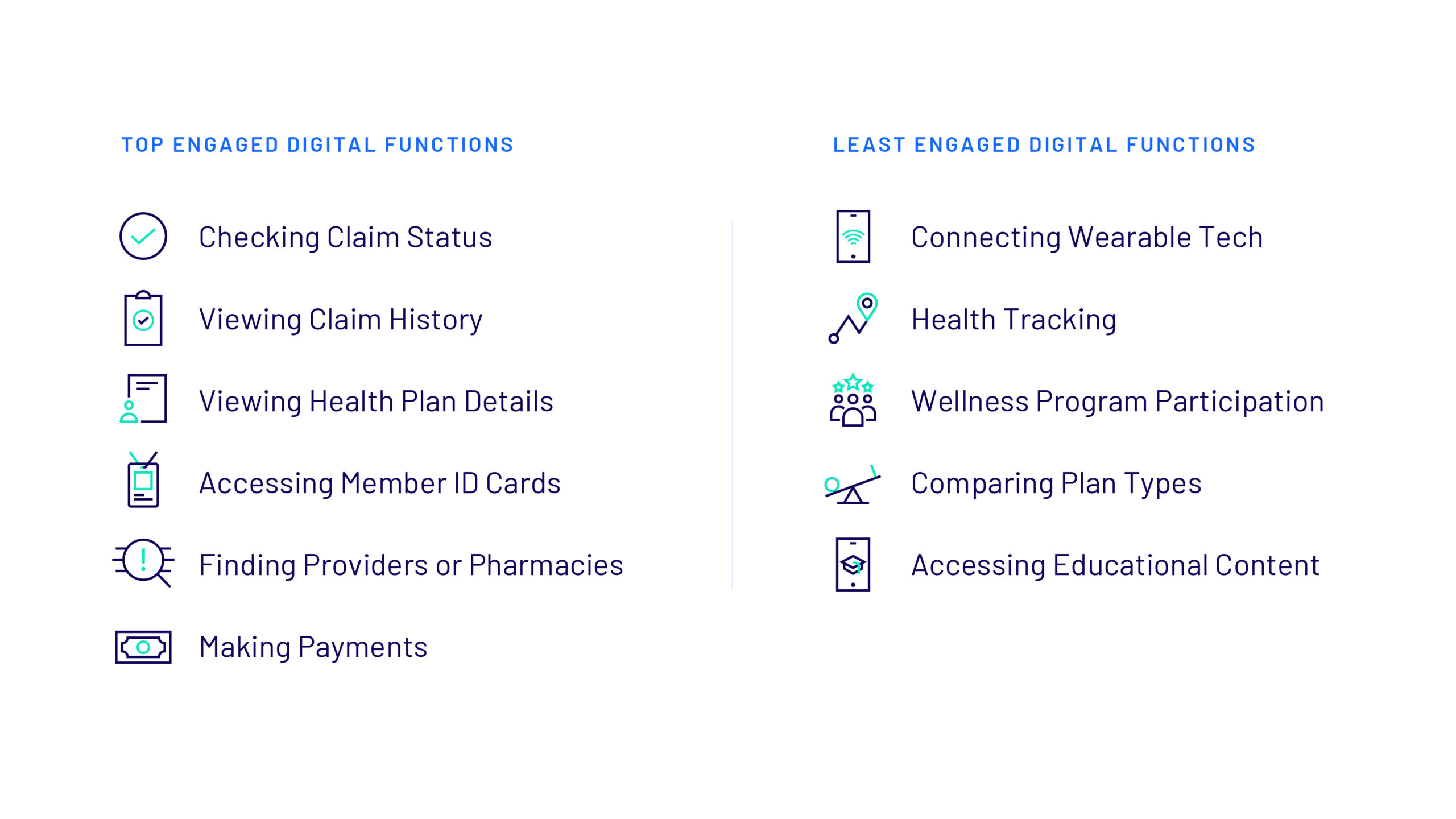Rising healthcare costs and chronic illness are shrinking payer profits. This has payers exploring wellness platforms as a path to better health outcomes and long-term gains, but many payers struggle to see ROI. The market is crowded—with established brands, niche apps, and influencers all competing for attention. To succeed, insurers must define a clear, strategic position or risk wasting resources and missing member engagement. Ignoring wellness altogether may leave them falling behind in the market and losing out on growth.
Whether you’re a healthcare payer exploring wellness tools to revamp your member engagement, or you’re looking to enhance your existing wellness offerings to be more effective, this article explores how to design effective wellness programs and what tools can be the key to your success.
Wellness Platforms and Their Strategic Importance
Before we dive into building a wellness platform that delivers value and drives member engagement, let’s dig into the unique value potential they hold for payer organizations.
- Lower healthcare costs through preventive measures
- Reduce costly emergency interventions by promoting proactive health management
- Strengthen competitive differentiation in a growing market
- Increase member engagement and satisfaction
- Gather actionable data insights to further optimize programs
A study by the Mayo Clinic shows that effective wellness programs boost preventative health practices, resulting in healthier members with lower risk profiles and fewer emergency interventions. These programs often involve educational services, health risk assessments, and interventions like health counseling and support groups.
Our research found that wellness platforms and their related functions are the least engaged digital health plan offering – yet 79% of health plan members consider wellness programs either somewhat or very important when choosing a plan.
These member trends motivate payers to consider wellness tools and features to support their competitive edge and address gaps in digital engagement.

For wellness offerings to be successful at engaging their members, payers need to focus on creating wellness platforms that are integrated, engaging, and scalable. They not only provide vehicles for long-term engagement, but they also position payers as authentic, trusted partners in their members’ health journeys.
Ultimately, the best wellness platforms align member needs with organizational priorities to drive benefits for both payer and member.
At Emids, we’ve developed our own wellness application design framework. WellXD outlines five design pillars formulated especially for wellness applications – Usability and Accessibility, Behavioral Design, Creative Design, User-Centered AI, and Wellness Ecosystem Interoperability. Together, these pillars establish a solid foundation for design to address the specific needs of members, rather than repeating ineffective practices common in the industry.
Providing Value In a Saturated Wellness Market
Creating a wellness service that truly connects with members and delivers ROI requires empathy, a thoughtful strategy and the right technology. But the saturation of the wellness market can complicate the role payers serve in the wellness ecosystem.
Payers should begin by clearly defining business or operational objectives their wellness programs aim to achieve – whether it’s cost reduction, improved member engagement, or growth etc. – and then design digital tools that will effectively activate members to support those outcomes.
Next, payers must take time to understand their members’ existing healthcare context. This includes identifying the technologies they already use to manage their health, the perceptions they hold about their insurance provider, and their expectations for support and care. This insight is critical to designing solutions that integrate meaningfully into members’ health practices.
We conducted a survey in January 2025 about members’ digital engagement practices, and when it came to wellness platforms, members expressed the following as the most valuable digital wellness plan features:
- Custom health advice based on personal health data
- Health assessments followed by personalized plans
- Connecting to third party wellness trackers, apps, and medical devices (e.g., FitBit, Apple Health, etc.)
- Programs to help manage chronic conditions
Generic, one-size-fits-all wellness platforms will not meet today’s high consumer expectations, where personalization is not a luxury, but a necessity. Through user-centered AI, wellness platforms can deliver tailored health advice, individual plans, and real-time guidance based on each member’s unique health data and plan benefits. This ensures members receive value at every touchpoint, fostering long-term engagement.
Interoperability to Adapt to Changing Member Habits
Outside of their health plan, the top five digital health platforms members engage with include fitness devices and wearables, fitness and exercise apps, health and wellness monitoring apps, existing provider portals or apps, and nutrition and diet apps. While payers may not want to compete to replace these platforms, it is imperative that they consider how their wellness platforms can integrate with them to provide members with an even better experience.
Interoperability in a wellness platform allows payers to consolidate data from external sources to create a better understanding of each member and provide an elevated, personalized wellness experience. This also gives payers the ability to track and monitor changing member behaviors and health realities, so their wellness platforms can continue to deliver personalized value to their end users using real-time data.
Keeping Pace with Wellness Tech
The most comprehensive wellness platforms are meaningless if members struggle to use them. A seamless user experience with intuitive navigation is essential.
Our survey found that across all digital functions, usability was scored at 3 out of 5 – presenting significant opportunities for improvement. What’s more, members rated usability as one of the most important factors influencing their engagement with digital tools.
User Experience (UX)
The level of competition in the wellness arena complicates payers’ navigation of the role they play within the landscape. It sets the standard for UX. Wellness leaders such as Strava or Apple Health understand the standards for UX and design for their platforms. A platform can feature valuable tools, but a poor user experience will likely have the user immediately downloading a different app that offers the same functionality.
It’s good practice to invest in UX at the foundational level of wellness platforms. This not only ensures intuitive navigation, and ease-of-use throughout the platform, but also avoids costly redesign later on – which can frustrate users as they may continually need to learn to navigate a changing experience.
Delivering Equitable Wellness
UX ensures a positive interaction with digital tools, but for wellness tools to support everyone, it needs to be accessible. Improving access to the preventative health supports that wellness platforms provide is especially important for older members as well as members with disabilities and those with chronic conditions. These groups hold strategic importance for payers, as they tend to have higher costs of care and are more likely to benefit the most from preventative support like condition management, medication reminders, and customized treatment plans.
Health insurance plans must take a proactive, structured approach to meet the HHS mandate, requiring all federally funded digital tools to conform to WCAG 2.1 Level AA standards. This begins with a comprehensive accessibility audit of all digital assets—websites, mobile apps and portals to identify and prioritize gaps. Accessibility should then be embedded into every stage of the development lifecycle, supported by team training on WCAG standards and inclusive design. Payers should also engage users with disabilities in usability testing to ensure real-world effectiveness and implement both automated and manual testing for ongoing monitoring. In addition, implementing a structured governance framework for accessibility and maintaining thorough documentation of compliance activities demonstrates a strong commitment to federal standards and helps mitigate potential legal and financial liabilities.
Driving Better Health Outcomes Through User-Centered AI and Behavioral Design
According to a Harvard University School of Public Health study, wellness programs have made an impact on member health, with medical costs falling, while absenteeism costs fell by about $2.73 for every dollar spent on wellness programs.
Behavioral science principles can transform wellness applications into more than just informational tools. Understanding factors that influence behavior can help encourage members towards better health outcomes. Incorporating behavioral design to help members make better health decisions, form long-lasting habits, and meet their personal health goals.
At Emids, our approach to behavioral design integrates insights from cognitive sciences, health behavior change theory, gameful design, and gamification. Design decisions for wellness platforms are thus made based on evidence-based principles known to encourage healthy behavior and promote sustained behavior change.
As with accessibility, behavioral design is also becoming standard when it comes to wellness platforms. Each new app might have a flavor of education, goal setting, and feedback mechanisms. However, to truly stand out, it’s important to look beyond standard principles of behavior change, as sometimes, often overlooked mechanisms can have a powerful impact on member engagement. Those that pursue a level of human connection – that feeling that others like you are also on a similar journey – have proven to have an impact if implemented correctly. Often overlooked is how the wellness platform might adjust according to a user’s constantly evolving environment. Finally, keep in mind that as a member progresses through their health journey, their needs and expectations for a platform will also change.
For more information on behavioral design and Emids’ BxD Framework, read our featured insight, Behavior Change is the New Frontier in Healthtech.
AI for a Personalized Approach
There is an entire spectrum of how AI can enhance personalization, customization, and individualization – ranging from targeted tone/voice/motivating language all the way to health journey decisions, treatment recommendations and prioritization of health goals.
While it’s still important to give the user autonomy in their digital experience through customized options such as health journeys and actions, incorporating increased personalization through content, where users are presented with information that is best for their individual needs, can lead to the ideal state of an ‘individualized’ service.
Take the Next Step Toward Member-Centric Wellness
Wellness platforms are becoming an increasingly valuable tool for payers looking to improve member retention, satisfaction, and overall competitiveness. Success depends on knowing how to leverage their unique role within the wellness ecosystem—by implementing best practices across UX, accessibility, and behavioral design, and by using AI responsibly with the end user in mind.
Our WellXD framework is built to support this kind of thoughtful, strategic approach. Are you ready to transform your wellness strategy? Talk to a WellXD expert today and learn how we can help you design innovative solutions to keep your members engaged, empowered, and healthy.
If you’d like to learn more ways to improve your digital member engagement, be sure to read our Definitive Member Engagement Playbook.


